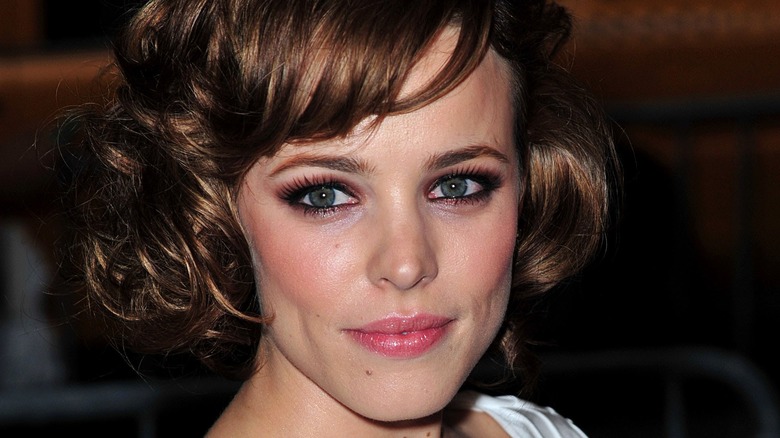Cheek Stain Vs. Blush: What's The Difference?
Who doesn't love a rosy hue on their cheeks? The ride rouge can really play up your complexion and help you achieve a glamorous look. But if choosing the best blush color for your skin tone wasn't hard enough, now you have to decide between different formulas.
Often, the term 'blush' refers to a powdered rouge stored in a compact and applied with a brush or a powder puff. However, blush can also refer to a cream formula stored in a tube or a stick. Unlike powder, which requires a pouf or a brush, this can be applied to the cheeks with fingers or a makeup sponge. Finally, there is cheek stain, which sort of sits in a category all its own, but still serves the same purpose. It's a liquid that stains your skin when applied.
Let's dive into the differences between each product, when to wear which, and how to apply them.
Powder blush
Powder blush is an oldie but a goodie. It's been the traditional blush product for a long time because it's user-friendly, covers well, and comes in so many shades. Celebrity makeup artist Jamie Greenberg told InStyle, "Powder blush is a great option for anyone who prefers a matte finish," and pointed out these formulas are "typically more heavily pigmented than creams," meaning that you can achieve a full-coverage look pretty effortlessly.
The secret is in the formula. Powder is generally thicker than a cream or a stain. Plus, it absorbs any excess oil from your face for a non-shiny finish. As long as they are applied correctly, they can outlast cream blushes. Speaking of application, powder blush is buildable, making it hard to apply too much. Simply use a brush (fluffy for subtle color and dense for vivid) to pick up color from your compact, tap off the excess, and sweep it along the cheekbones in an upward motion.
Powder blush is best if you want a matte finish, medium lasting wear, and want to be able to build your color. The only disadvantage is that it isn't ideal for fresh skin without some sort of foundation already applied. If you put it on a bare face with oily or wet spots, your application may look blotchy.
Cream blush
Cream blush has been gaining popularity as beauty looks trend towards a dewier aesthetic. The product is just like it sounds, a cream (or emollient) that typically comes stored in a tube, twist-up-stick, wand, or compact. Some would argue that cream blush is even easier to apply than powder blush, instantly adding a bright and youthful look to one's complexion. The best part is that it blends seamlessly into skin. As makeup artist Jamie Greenberg tells InStyle, "Cream blushes tend to look more natural than powders."
Some cream products you encounter might carry some good-for-you ingredients too, like antioxidants or SPF. The texture of the emollient makes it almost undetectable as well, as it is usually translucent with a hint of pigment. But unfortunately, cream blush usually doesn't have the staying power that powder products do.
Thankfully, it's effortless to reapply should you need to do so. Using your fingers or a sponge, tap and blot the cream blush onto the apples of your cheeks and along your upper cheekbones. Avoid rubbing, as it can leave splotches of color. Unlike powder blush, cream blush is better suited to clean skin or a face wearing a liquid foundation. Powder-set makeup doesn't make a great base for cream blush, though you can apply it first and place setting powder over it.
Cheek stain
Cheek stain is your go-to if you want an all-day flush. It does what it says — stain (only temporarily though). Out of the three options, it's the longest lasting, as it can stay on even through sweat or light moisture. Neither dewy nor matte, they have a very natural-looking finish.
Celeb makeup artist Emily Cheng tells InStyle, "The look with a stain is more of a flush of color that appears to radiate from within." The only downside to cheek stain's staying power is that you want to be pretty precise with your application and ensure that you love the color before swiping it on. Not only will this type of product stain your skin, but it also does so quickly, drying pretty fast. This means they may not be well suited to makeup beginners.
When using a stain, it's best to start with clean skin, and definitely avoid applying it over powder. To apply a cheek stain, place a small amount of product on the apples of your cheeks. Then, using your fingers or a sponge, dab the product wherever you want color, working quickly but taking your time to blend well. Cheng likes to apply the stain with downward strokes in the area a person would naturally blush for the most realistic effect. If you don't want to leave it as is, finish with a setting powder for a matte look or a balm if you desire a dewy aesthetic.
